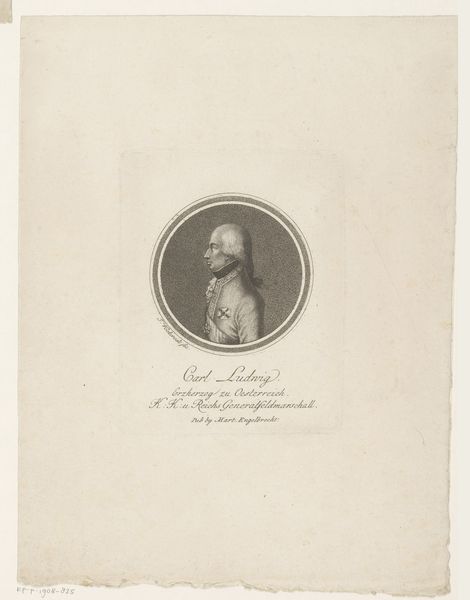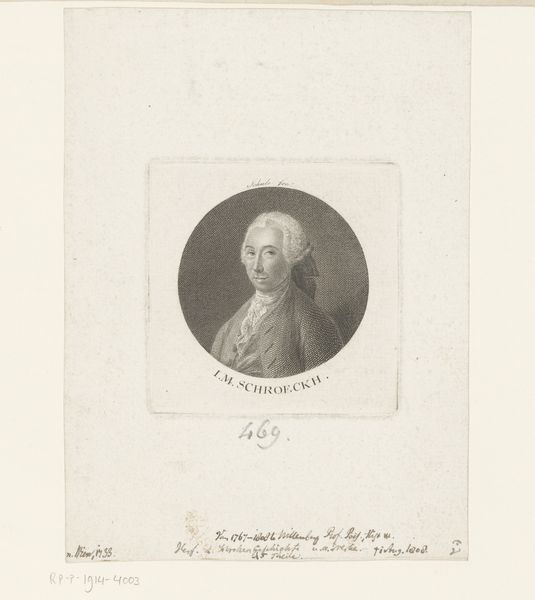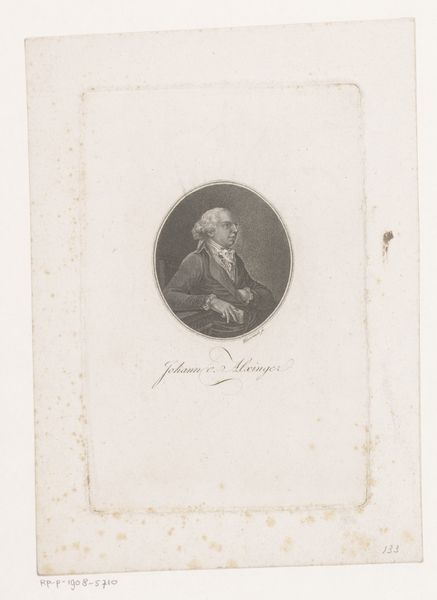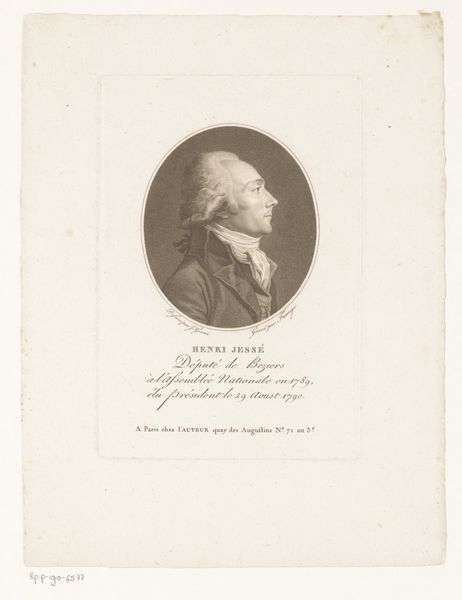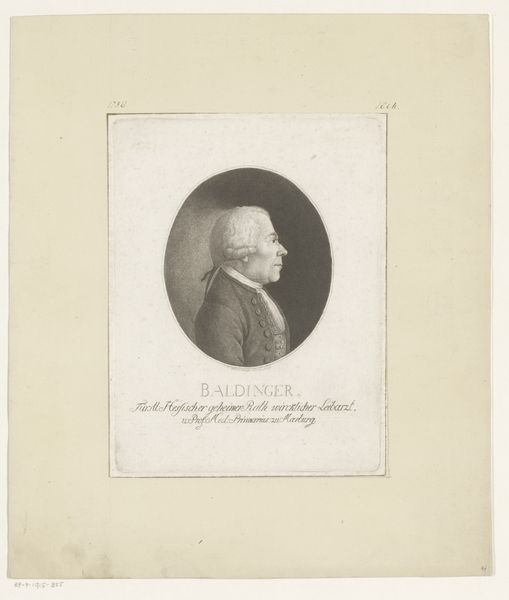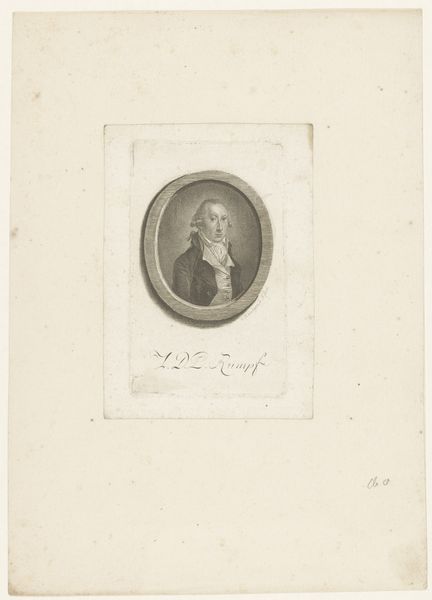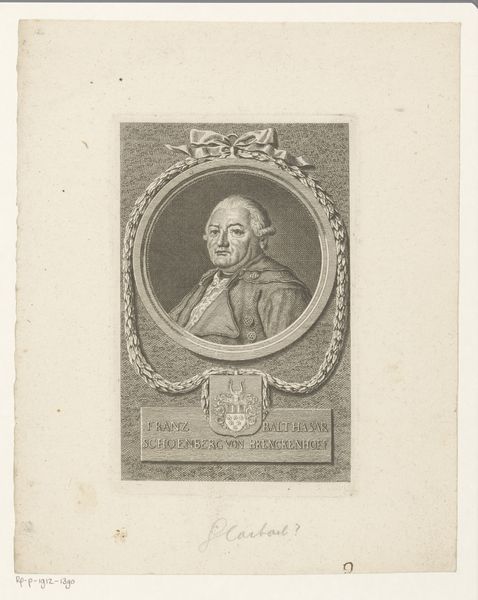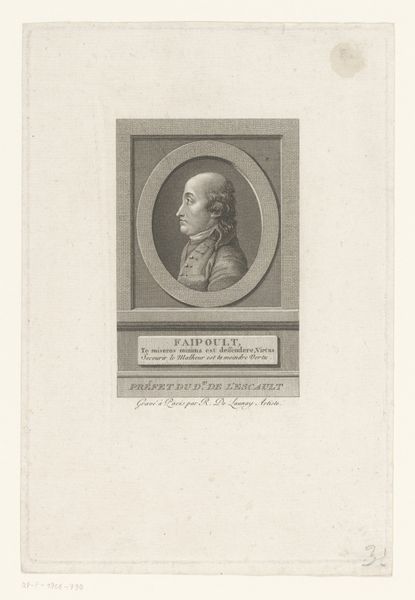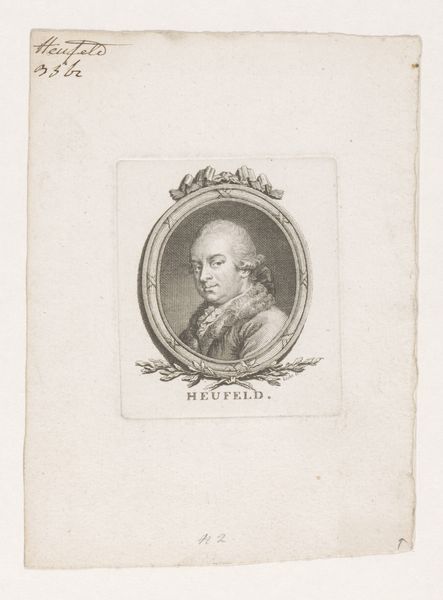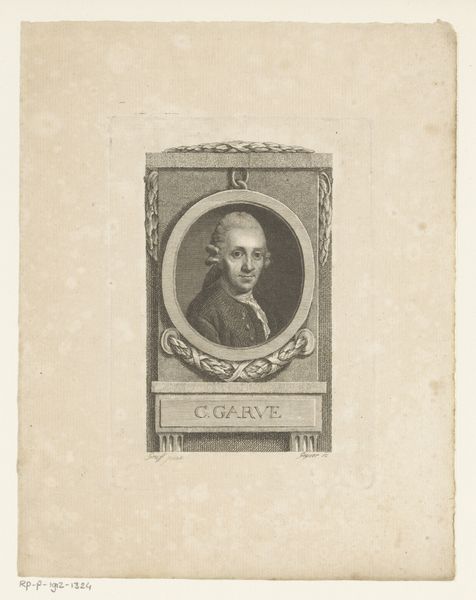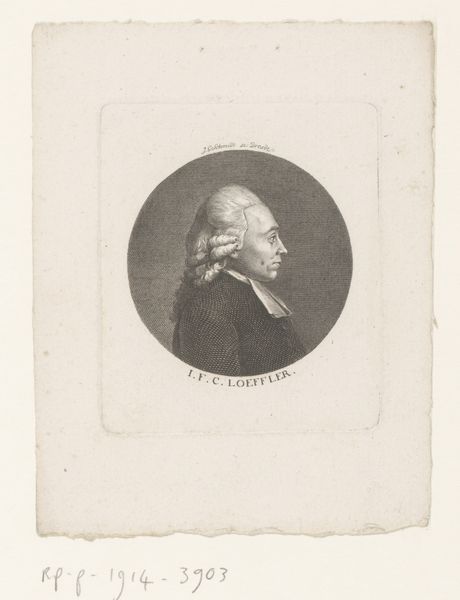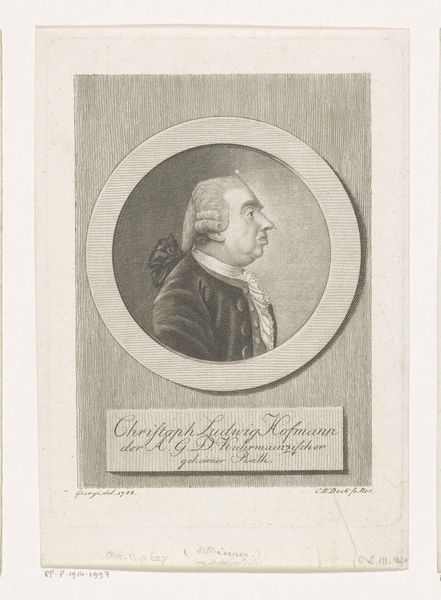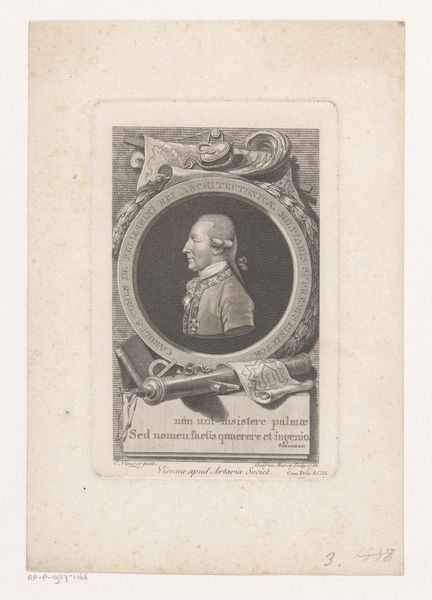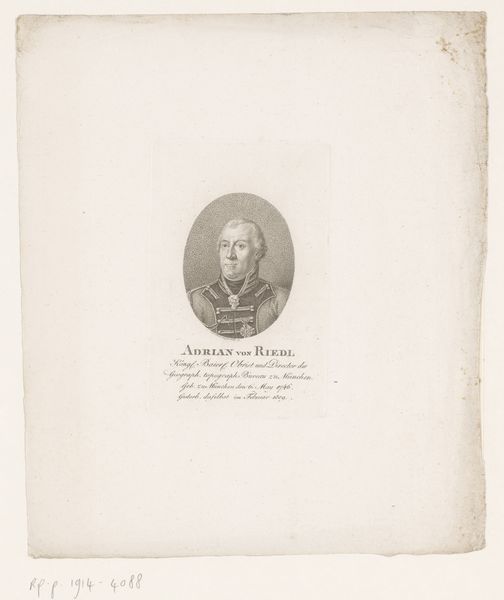
Dimensions: height 119 mm, width 71 mm
Copyright: Rijks Museum: Open Domain
This portrait of Johann Christian Wiegleb was made by Carl Christian Glassbach, and it’s an engraving. The artist has used a printmaking technique, manipulating the surface of a metal plate to create an image, then transferring it to paper. Look closely, and you’ll see how the lines vary in thickness, creating a sense of volume and texture. Engraving was a labor-intensive process, requiring skilled artisans to meticulously carve the design. Consider the number of prints that would have been made from a single plate, each one demanding time and precision. In a way, prints like these were the photographs of their time, allowing for the relatively inexpensive distribution of images. Prints like these collapse traditional hierarchies of art and craft. They are hand-made, yet also reproducible, occupying a space between unique artwork and mass-produced commodity. Recognizing this intersection helps us appreciate the full spectrum of skills, labor, and social context that shaped the artwork.
Comments
No comments
Be the first to comment and join the conversation on the ultimate creative platform.
